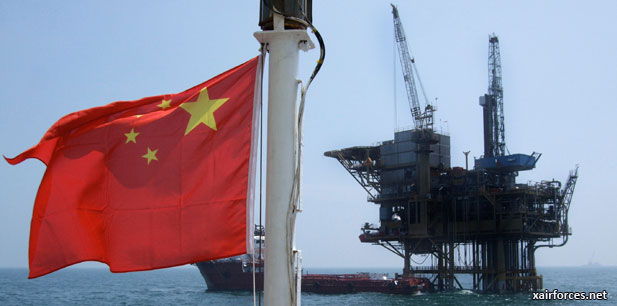
South China Sea Dispute: The Farce of Chinese Multilateralism

In the most dangerous turn of events in the South China Sea, on July 23, China’s military body, the Central Military Commission approved the deployment of the People’s Liberation Army to guard the islands claimed by it. Earlier in June, China’s State Council had raised the administrative status of the seas to the level of a city, which it calls Sansha and which is located in the disputed Paracel Islands.
These two moves indicate Beijing’s growing aggressiveness and unilateralism, which clearly go against the spirit of the 2002 DOC (Declaration of Conduct of parties), a multilateral political document agreed upon by the ASEAN and China that calls for resolution of ‘territorial and jurisdictional disputes by peaceful means, without resorting to the threat of force.’
The main hindrance to the resolution of the South China Sea dispute is, of course, China’s aversion to any multilateral solution to what is in effect a multilateral dispute arising out of the competing territorial claims of China, Taiwan, Philippines, Malaysia, Vietnam and Brunei. From the beginning China has insisted on bilateral negotiations with individual Southeast Asian countries. In fact, the Chinese government held that ‘major regional security issues related to territorial dispute is best handled by bilateral negotiations rather than by multilateral means’. Although Beijing accords multilateralism a more central place in Chinese foreign policy, it however subordinates it to the principle of sovereignty. This was palpable during the 1995 Second ASEAN Regional Forum (ARF) Ministerial Meeting, which laid out three stages of development of regional security cooperation: confidence building; preventive diplomacy; and, conflict resolution strategies. While adhering to the first stage, the PRC has displayed serious reservations about the second and third stages since the preventive diplomacy and conflict resolution processes conflicted with China’s sovereignty issues. Needless to point out, the bilateral mechanism allows China to keep the multiple claimants divided and confused about the territorial resolution and offers Beijing greater manoeuvrability in the negotiating process. In other words, resolution of the South China Sea dispute has been crippled from the beginning on account of China’s limited and pretentious multilateralism and its strong emphasis on the principle of national sovereignty. To add to the present crisis, China has unilaterally gone ahead and laid claim to almost the whole of the South China Sea. This has clearly rendered China’s multilateralism as a completely farcical foreign policy formulation.
Indeed, China’s aggressive moves in the South China Sea have rendered multilateralism a mere sham. Multilateralism, in the Chinese understanding, emerged essentially as a strategic tool to oppose US hegemonic and unilateralist policies. It was also meant to achieve an equitable international political and economic order by allowing Beijing a larger share in the decision making process. Further, it was also aimed at diminishing the ‘China threat theory’ and building an image of a responsible China among the Southeast Asian countries. But by going unilateral on the South China Sea, China has, in effect, acted not any differently from the United States.
Beijing’s unilateralism in the South China Sea also invalidates its theoretical proposition of the New Security Concept (NSC), out of which evolved China’s own understanding of multilateralism. Ironically, the NSC was explained at the ASEAN’s 30th anniversary in December 1997 by the then Chinese Foreign Minister Qian Qichen as China’s cooperative security model opposed to the US hegemonic unilateral model. It set out the principles of international relations based on mutual trust, mutual benefit, equality and coordination. NSC also claimed to offer “an alternative system for managing relations between countries which differ in their social systems, values and developmental levels.” In the subsequent period, riding on the principles of the NSC, the formulation of peaceful rise was made, which now lies shattered under the impact of China’s unilateral measures in the South China Sea and which are threatening to push the region into a war-like scenario.
China’s motivation of national aggrandizement couched in the peaceful altruistic notion of the NSC is in reality not an alternative model of international relations. When the Chinese leadership speaks of ‘setting aside dispute and pursuing joint development’ in the South China Sea, it means four things:
“the sovereignty of the territories concerned belong to China; when conditions are not ripe to bring about a territorial solution, discussion on sovereignty may be postponed; the territories under dispute may be developed in a joint way; and, the purpose of joint development is to enhance mutual understanding through cooperation and create conditions for the eventual resolution of territorial ownership.”
Embedded in this Chinese perspective on resolution of disputed territories are two issues: First, China’s retention of the sovereignty prerogative despite the competing claims; and second, its aversion to multilateralism in conflict resolution. Clearly, China’s ideas of multilateralism and sovereignty are based on the Westphalian model of state building and do not in any manner offer an alternative system.
Thus, multilateralism is basically a farce in Chinese foreign policy. For China, the South China Sea dispute is merely a sovereignty issue in which it brooks no interference of external forces. It opts to settle the issue on its own terms rousing nationalism, constructing false historiography and displaying military muscle. Paradoxically, on the one hand it upholds ‘joint development’ of disputed areas, but on the other it criticizes the US for upholding freedom of navigation in the South China Sea and for displaying a ‘Cold War mentality’. In the ultimate analysis, on territorial and sovereignty related issues, China is likely to increasingly display unilateral tendencies. This is commensurate not only with China’s growing power but also with the relative decline of the United States.
Source:By Abanti Bhattacharya / Institute for Defence Studies & Analyses (IDSA) News - 01 August 2012 (Abanti Bhattacharya is Associate Professor at the Department of East Asian Studies, University of Delhi.)
Photo: South China Sea Deep-Water Oil Rigs as Strategic Weapons (Photo by www.murphyonpiracy.com)
(1.08.2012)
|